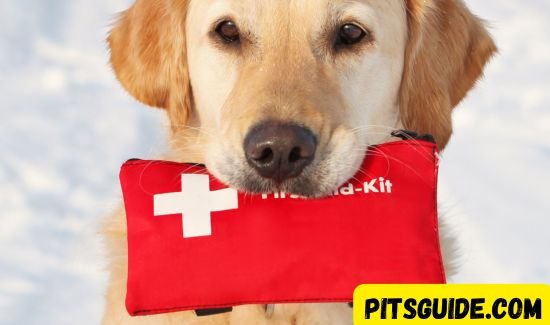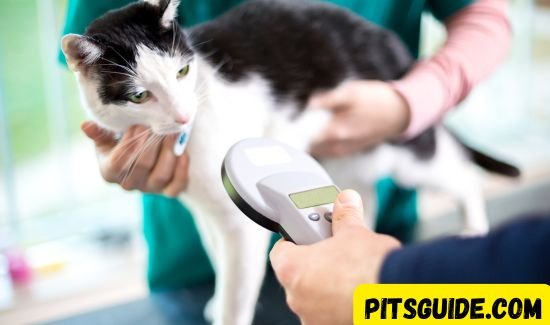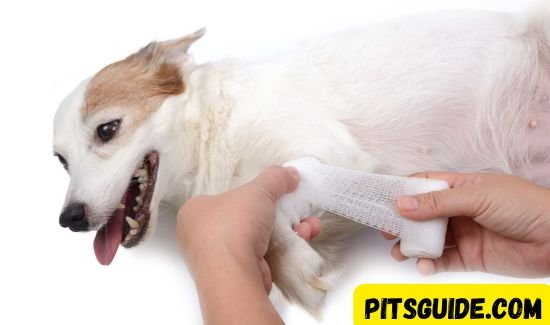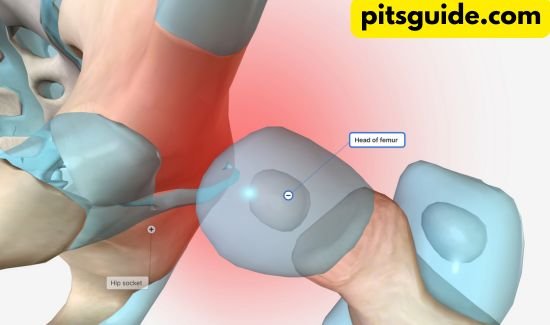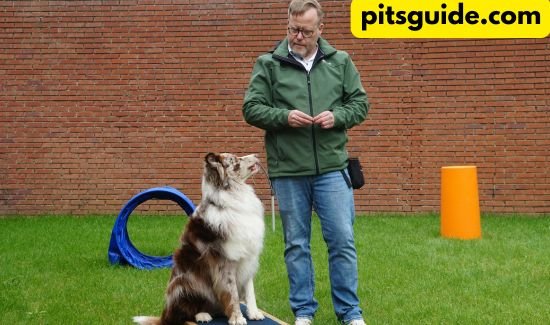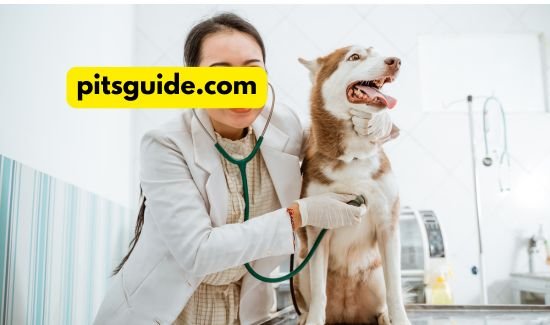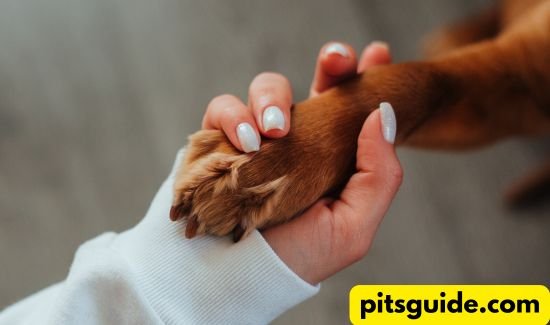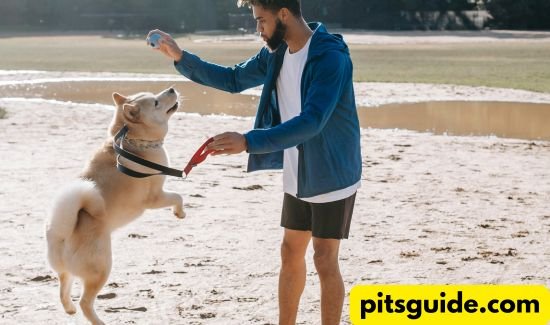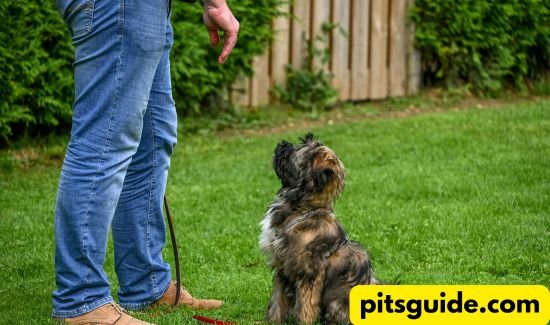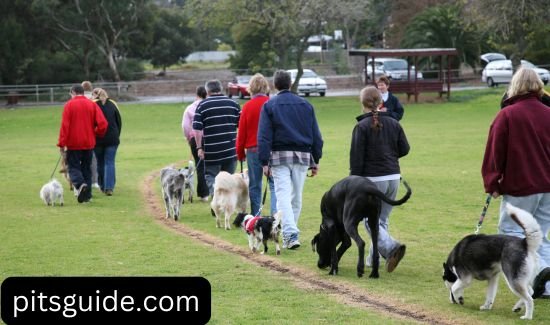Table of Contents
1. **Introduction**
– Importance of First Aid for Dog Owners
– First Aid vs. Veterinary Care
2. **Preparing for Emergencies**
– Basic First Aid Kit Essentials
– Traveling with Your Dog: Portable First Aid Kit Tips
– Key Emergency Contacts
3. **Recognizing Common Pet Emergencies**
– Severe Bleeding
– Seizures
– Bee Stings
– Poisoning
– Difficulty Breathing
– Sudden Collapse
– Severe Vomiting
4. **Signs Requiring Immediate Veterinary Attention**
– Recognizing Severe Bleeding and Breathing Issues
– Understanding Abnormal Behavior and Pain Symptoms
5. **The Importance of Quick Response**
– Timely Action and Veterinary Intervention
– ASPCA Poison Control Information
6. **Essential Components of a Dog First Aid Kit**
– Key Items (Gauze, Adhesive Tape, Scissors, Gloves, etc.)
– Special Items (Hydrogen Peroxide, Diphenhydramine, Activated Charcoal)
7. **Assessing Your Dog’s Vital Signs**
– Heart Rate and Breathing Guidelines
– Temperature Assessment
– Recognizing Abnormal Vital Signs
8. **Proper Restraint Techniques for Injured Dogs**
– Muzzling and Blanket Restraints
– Immobilizing for Suspected Spinal Injuries
– Ensuring Safety During Restraint
9. **Emergency Response Protocol**
– Initial Assessment Steps
– Knowing When to Call Emergency Services
– Transportation Safety for Sick or Injured Dogs
10. **Managing Bleeding and Wound Care**
– Steps for Stopping Severe Bleeding
– Cleaning and Dressing Wounds
11. **Responding to Choking Emergencies**
– Heimlich Maneuver for Dogs
– Clearing Airway Obstructions
12. **Handling Poisoning and Toxic Exposure**
– Common Toxins and Symptoms
– ASPCA Poison Control Center Support
– Immediate Steps for Different Types of Poisoning
13. **CPR and Rescue Breathing for Dogs**
– Step-by-Step CPR Guide
– Rescue Breathing Techniques
– CPR Tips for Small Dogs
14. **Treating Burns and Heat-Related Emergencies**
– First Aid for Burns
– Recognizing and Responding to Heat Stroke
15. **Emergency Prevention and Preparedness**
– Creating an Emergency Action Plan
– Important Contact Information and Record Storage
– Evacuation Drills and Preparedness Tips
16. **Conclusion**
– Importance of Being Prepared
– Summary of Key Takeaways for Dog Owners
17. **FAQs**
– First Aid vs. Veterinary Care
– Common Emergency Signs
– First Aid Kit Essentials
– Vital Sign Assessment and Restraint
– Responding to Bleeding, Choking, Poisoning, and Burns
– CPR Techniques and Heat-Related Care
– Emergency Preparedness and Prevention
Quick First Aid Tips for Dog Owners in Emergencies
Being prepared for emergencies is essential for dog owners. First aid for dogs is important but not a full replacement for vet care.Having a pet first aid kit and being familiar with basic first aid are beneficial.In this manner, you can support your dog until they receive medical attention.
Bring a little first aid kit with you when you travel with your dog.Also, have your vet’s number and the nearest animal hospital’s number ready. This helps you act fast if your dog gets sick or hurt, anywhere.
When giving first aid to your dog, be careful. Don’t hug or hold them because they might hurt you. Keep a safe distance and use a muzzle if needed.The most important thing is that you and your dog stay safe.
After giving first aid, get your dog to a vet right away. First aid is not a full fix.Your dog’s health and safety come first.
Key Takeaways
- Equip yourself with basic dog first aid knowledge and maintain a pet first aid kit for emergencies.
- When traveling, keep a compact, travel-sized first aid kit and important contact information on hand.
- Observe safety precautions when providing first aid, such as avoiding direct contact and using a muzzle if After giving any first aid, get professional medical help right away because it is not a replacement for veterinarian treatment.
- Remain calm and focused on your dog’s well-being during an emergency situation.
Understanding Pet Emergency Basics
As pet owners, it’s key to be ready for health emergencies. These can include severe bleeding, seizures, bee stings, and poisoning. Knowing when to get vet help fast is very important.
Common Types of Pet Emergencies
- Severe bleeding
- Seizures
- Bee stings
- Poisoning
- Difficulty breathing
- Sudden collapse
- Severe vomiting
Signs That Require Immediate Veterinary Care
- Severe bleeding
- Difficulty breathing
- Abnormal behavior or signs of pain
The Importance of Quick Response
In pet emergencies, time is very important. Quick action and vet care can save lives. If you think your pet is in trouble, call your vet or an emergency animal hospital right away.
For poisoning, call the ASPCA Animal Poison Control Center at (888) 426-4435 for help.
| Emergency Contact Information | Details |
| Veterinarian | Greenway Animal Hospital: (555) 555-5555 |
| Emergency Animal Hospital | 24-Hour Pet ER: (555) 555-5556 |
| ASPCA Poison Control | (888) 426-4435 |
Having a plan and the right contact info ready can help you act fast in an emergency. Knowing when your pet is in distress and having a first aid kit can also help.
Essential First Aid Kit Components for Dogs
A quality first aid kit is essential for pet owners. It should have items for many dog health problems. This includes small cuts and big injuries or illnesses.
Your kit should have basic things like gauze, tape, scissors, and gloves.A pet first aid book is also essential. These items help care for your dog until a vet can see them.
For trips with your dog, a smaller kit is better. It should have your dog’s health records and important supplies. This includes food, water, and ID tags.
- Gauze pads and rolls
- Adhesive tape
- Scissors
- Non-latex gloves
- Under a veterinarian’s supervision, hydrogen peroxide can induce vomiting.
- Activated charcoal (to bind toxic substances)
- Saline solution
- Diphenhydramine (for allergic reactions, with vet dosage)
- Pet-safe sunscreen
- Thermometer
- Towel or blanket
- Leash and harness
- Muzzle
- Pet first aid book
For more safety, make a pet emergency kit. Add food, water, and first-aid items. This kit helps keep your dog safe in emergencies.
Always discuss your first aid kit with your veterinarian. They can advise you on how to utilize it and what to include. With the right kit and knowledge, you can help your dog in emergencies.
Assessing Your Dog’s Vital Signs in Emergencies
In emergency situations, quickly checking your dog’s vital signs is key.It aids in understanding their condition and your next course of action. It’s critical to understand normal breathing, temperature, and heart rate ranges. In this manner, you may immediately identify any issues that require veterinary assistance.
Checking Heart Rate and Breathing
The heart beats 60–140 times per minute in a healthy dog. Bigger dogs beat slower, while smaller ones beat faster. To find your dog’s heart rate, feel their pulse on the inside of their hind leg. Count the beats for 60 seconds to get their heart rate.
A dog should breathe 10 to 35 times a minute without panting. In a minute, keep an eye on their chest and count their breaths.This tells you if their breathing is normal.
Understanding Normal vs. Abnormal Signs
Dogs might breathe fast or have a racing heart when stressed, like at the vet. But, if this keeps happening, it could mean a bigger problem. Look out for signs like hard breathing, irregular heartbeats, and unusual body temperature.
Temperature Assessment Guidelines
Dogs typically have body temperatures between 100.5 and 102.5 degrees Fahrenheit. To check this, use a digital thermometer in their rectum. If the temperature is not in this range, get vet help fast.
https://youtube.com/watch?v=yrRqDa9xZMo
While you wait for a veterinarian to arrive, you can provide your dog the best treatment possible by keeping an eye on their vital signs.
Proper Restraint Techniques for Injured Dogs
When an injured dog needs help, it’s key to restrain them safely. Muzzling can stop bites. You can use a leash, belt, or even a sock to do this.Another way to help them stay calm is to wrap them in a blanket.
For dogs with spinal injuries, it’s vital to keep them still. Use a board and straps to do this. This stops more harm and keeps them stable. Always make sure their head is free and don’t block their airway.
- Use a muzzle, leash, belt, or other materials to restrain the dog and prevent bites
- Wrap the dog in a blanket or towel to control an unmanageable pet
- Immobilize the dog on a board for suspected spinal injuries, securing with straps or cords
- During restraint, keep the dog’s head open and refrain from tightening its trachea.
Good restraint keeps everyone safe and helps the dog get the care they need. By focusing on pet safety, you can handle emergencies well. This guarantees the highest quality of care for your dog.
| Restraint Method | Application | Advantages |
| Muzzling | Making use of a strap, rope, leash, belt, necktie, or sock | Prevents bites, allowing safe handling of the injured dog |
| Blanket/Towel Wrapping | Wrapping the dog’s body | Helps control an unmanageable pet during emergency situations |
| Spinal Immobilization | Securing the dog on a board with straps or cords | Prevents further injury and ensures stability during transport or treatment |
When handling an emergency, proper restraint is crucial for the dog’s and the caregiver’s safety. By utilizing effective techniques, you can ensure your pet receives the necessary medical attention without further harm.”
Health & Wellness: Emergency Response Protocol
As a pet owner, knowing how to act in an emergency is key. It keeps your dog safe and healthy. Quick action and the right steps can save your dog’s life.
Initial Assessment Steps
First, check the area for dangers. Make sure your dog is warm and calm. Then, call your vet for advice.
When to Call Emergency Vet Services
Call the vet right away for serious problems. This includes bleeding, trouble breathing, or poisoning. If your dog looks sick or you’re worried, call the vet.
Transportation Safety Guidelines
When moving a sick dog, be careful. Small dogs need a carrier or crate. Use a board or blanket for big dogs. Keep your pet and yourself safe on the way to the vet.
You can aid your pet by doing these things. Always put your dog’s health first.
Managing Bleeding and Wounds
In emergency situations, quick action is key for pet wound care and bleeding. Every second counts, especially for severe bleeding. As pet owners, knowing the right first aid is crucial.
Stopping Severe Bleeding
If your dog bleeds a lot, press the wound with a clean cloth or gauze pad. If it doesn’t stop in 10 minutes, a tourniquet might be needed. But, only use one if you know how. Use a commercial tourniquet, not belts or ropes.
Cleaning and Dressing Wounds
For open wounds, clean with mild soap and warm water or sterile saline. Then, cover with a clean gauze pad and use tape or vet wrap. Get vet help soon, as some wounds need stitches.
If not properly cared for, even little cuts can bleed profusely. If bleeding lasts over 15-20 minutes, or if your pet shows shock signs, get help fast.
Particularly in cases of severe bleeding, seconds might be the difference between life and death.
Being ready with the right knowledge and supplies can save your pet’s life. Quick and correct action is vital for pet wound care and bleeding management.
Responding to Choking Emergencies
Choking is a severe emergency that requires immediate attention.Almost 5,000 people die from choking in the United States each year. If your dog is choking, you must act fast to clear their airway and help them breathe again.
Heimlich Maneuver for Dogs
The Heimlich maneuver can help remove an object blocking your dog’s airway. Stand behind your dog and wrap your hands around their waist. Make a fist with one hand and put it just below their rib cage.
Use your other hand to hold your fist. Then, push upward and inward quickly.Repeat a few times until the obstruction is removed.
Clearing Airway Obstructions
- If you see the object, try to remove it gently from your dog’s mouth or throat with your fingers. Don’t push it further down.
- If the Heimlich maneuver doesn’t work, or your dog loses consciousness, you might need to do the XXT maneuver or a modified Heimlich.
- Get your dog to a vet right away if they still can’t breathe or you can’t remove the blockage.
It’s also key to prevent choking. Make sure your dog’s food is small pieces. Keep small things away from them. If your dog starts choking, stay calm and quickly try to clear their airway.
Handling Poisoning and Toxic Exposure
As a pet owner, being ready for emergencies is key. This includes knowing what to do if your pet gets poisoned. Toxins can be in household items, foods, and plants. Quick action and the right first aid can really help.
If you think your dog ate something bad, call a vet or the ASPCA Animal Poison Control Center (888-426-4435) right away. Tell them everything you know about what your dog ate. This includes what it was, how much, and when.
- For food poisoning, making your dog vomit might help. But, don’t do this for chemical poisoning, as it can hurt them more.
- If your dog got a toxic substance on their skin, clean it with mild soap and warm water.
- Watch your pet for signs of trouble like vomiting, diarrhea, or drinking too much water. These could mean they got poisoned.
Dogs can get sick from things like chocolate, raisins, and some plants. Knowing these dangers and keeping them away is important. Being ready and knowing what to do can save your pet’s life.
| Toxic Substance | Symptoms of Poisoning | First Aid Measures |
| Chocolate | Vomiting, diarrhea, increased heart rate, seizures | Contact vet immediately, do not induce vomiting |
| Raisins and Grapes | Kidney failure, vomiting, lethargy | Contact vet immediately, do not induce vomiting |
| Certain Plants (Lilies, Azaleas, Sago Palms) | Vomiting, diarrhea, liver failure, kidney failure | Contact vet immediately, remove plant material if possible |
Prompt action and proper first aid can make a significant difference in the outcome of pet poisoning emergencies.
CPR and Rescue Breathing Techniques
In a pet emergency, knowing CPR and rescue breathing is key. These steps can keep your dog alive until help comes.
Step-by-Step CPR Guide
If your dog stops breathing, act fast. Here’s how to do dog CPR:
- Lay your dog on its right side on a flat, hard surface.
- Place the heel of one hand on the center of your dog’s chest, just behind the elbow.
- Compress the chest 100-120 times per minute, with a depth of 30-50% of the chest’s diameter.
- After 30 chest compressions, tilt your dog’s head back, lift the chin, and give 2-3 rescue breaths through the nose.
- Repeat the cycle of 30 chest compressions followed by 2-3 rescue breaths until your dog begins breathing on their own or emergency services arrive.
- For smaller dogs, use one hand for the chest compressions.
Rescue Breathing Methods
If your dog is breathing but not awake, rescue breathing can help. Follow these steps:
- Clear your dog’s airway by gently opening their mouth and removing any visible obstructions.
- Tilt your dog’s head back and extend their neck to open the airway.
- Seal your mouth over your dog’s nose and give 2-3 slow, full breaths, watching for their chest to rise.
- Provide 20 rescue breaths per minute, alternating with 30 chest compressions.
Doing CPR and rescue breathing right can save your dog’s life. Stay calm, act fast, and keep going until help comes.
| Key Statistics | Value |
| Cardiac arrests in the U.S. annually | 436,000 |
| Cardiac arrests that occur at home | 73.4% |
| Cardiac arrests that take place in the workplace | 10,000 |
| Bystander CPR for patients of sudden cardiac arrest | 40% |
| Survival rate of out-of-hospital cardiac arrests | 9% |
| Increase in survival chances with immediate CPR | Double or triple |
Quick action and right CPR and rescue breathing can save your dog. Stay informed, prepared, and ready to act when it counts.
Treating Burns and Heat-Related Emergencies
Summer brings more risks for our dogs. They can get burned or have heat emergencies. Owners need to know how to help fast and when to see a vet.
Treating Dog Burns
First, cool a burn with water for 10 minutes. This stops more damage. Then, use a clean, dry cloth to cover it. Don’t use butter or honey, as they can make it worse. Even small burns need vet care to avoid infections.
Responding to Heat Stroke
- As soon as possible, move your dog to a cool, shaded spot..
- Use cool water on their head, neck, and groin.
- Give them small amounts of water to drink, but don’t force it.
- Watch for signs of shock, like fast breathing or pale gums.
Heat stroke is very serious and needs vet help fast. Spotting signs early and acting quickly can save your dog’s life.
For a dog experiencing a burn or heat-related disease, prompt action and appropriate first aid can be the difference between life and death.
Preventing burns and heat is best. Keep your dog safe and know what to do in an emergency. Talk to your vet for tips on keeping your dog cool this summer.
Emergency Prevention and Preparedness Tips
It’s very important for pet owners to be ready for emergencies. This helps keep your pets safe and happy. Having a good pet emergency plan and important phone numbers ready can help a lot when trouble comes.
Creating an Emergency Action Plan
First, make a plan for your pet in case of an emergency. This plan should cover how to leave quickly, where to go, and what to bring. Disaster preparedness is very important. Emergencies can happen because of sickness, bad weather, or no power.
- Gather important documents like vaccination records and microchip information
- Identify a network of trusted friends or family who can care for your pet if you need to evacuate
- Ensure your pet’s collar has up-to-date identification and contact information
Important Contact Information Storage
It’s also key to have easy access to important phone numbers. Keep your vet’s number, the nearest animal hospital, and the ASPCA Animal Poison Control Center somewhere easy to find. Health and wellness are very important in emergencies.
- Keep copies of your pet’s medical records and vaccination history in a secure place
- Program essential numbers into your phone and keep a physical copy in your emergency kit
- Practice evacuation drills with your pet to reduce stress and ensure a smooth process
By getting ready for emergencies, you can keep your pet safe and healthy during hard times. Remember, being ready is the best way to keep your pet’s health and wellness safe in any situation.
Conclusion
Being ready for pet emergencies is key for dog owners. Quick action and the right pet first aid can save lives. Always get vet help after first aid.
Regular vet visits, a first aid kit, and knowing about pet health help a lot. Your calm and ready response is very important in emergencies.
Knowing about common pet emergencies and how to handle them is crucial. Learning CPR and how to restrain pets helps a lot. By focusing on your dog’s health & wellness, you keep them safe and happy.
Having the right knowledge and tools is vital for any pet emergency. Always be alert and ready, and always think of your pet first. With these tips, you can handle any pet emergency with confidence and care.
FAQ
Is first aid for dogs a substitute for veterinary care?
No, first aid for dogs is not a full replacement for vet care. It’s good in emergencies, but dogs need vet help.
Which common pet emergencies need to be attended to right away?
Common emergencies include bleeding, seizures, bee stings, and poisoning. Look for signs like severe bleeding, trouble breathing, and odd behavior.
What should a pet first aid kit include?
A pet first aid kit should have gauze, tape, scissors, gloves, hydrogen peroxide, and a pet first aid book. Carry a travel-sized kit with you.
How can I properly assess my dog’s vital signs in an emergency?
Check your dog’s breathing, heart rate, and temperature. Normal signs are regular breathing and heartbeat. Look out for signs like trouble breathing or an irregular heartbeat. The normal dog temperature is 101-102.5°F (38.3-39.2°C).
How should I restrain an injured dog for safety?
It’s important to restrain injured dogs safely. You can use a leash, belt, or other material to muzzle them. Wrap them in a blanket or towel to control them. For spinal injuries, use a board to immobilize them.
What should I do in case of a bleeding wound?
For bleeding wounds, apply direct pressure with a clean cloth or gauze. If it’s severe, use an elastic bandage. Clean the wound with mild soap and water, then cover it with gauze and tape.
How can I respond to a choking emergency?
Try to gently remove the object causing the blockage. If you can’t, do the Heimlich maneuver. Stand behind the dog, wrap your hands around their waist, and thrust upward and inward. For unconscious dogs, use the XXT or modified Heimlich maneuver.
What should I do if my dog has been poisoned?
If you think your dog was poisoned, call a vet or the ASPCA Animal Poison Control Center (888-426-4435) right away. Tell them what your dog ate. For skin exposure, wash it with mild soap and water. Unless instructed to do so by a veterinarian, do not induce vomiting.
How do I perform CPR on a dog?
Lay the dog on its right side for CPR. Compress the chest 100-120 times per minute. For rescue breaths, clear the airway, extend the head and neck, and give 2-3 breaths through the nostrils. Do 30 chest compressions and 2 breaths, then repeat.
How should I respond to burns or heat-related emergencies?
For burns, flush with cool water for 10 minutes and cover with a clean dressing. For heat stroke, move the dog to a cool place, apply cool water, and give small amounts of water. Don’t force them to drink. Seek vet help for all burn and heat emergencies.
How can I prepare for pet emergencies?
Make an emergency plan for your pet, including evacuation and shelter info. Keep important numbers like your vet’s and the ASPCA’s handy. Have your dog’s medical records and vaccination history ready.

